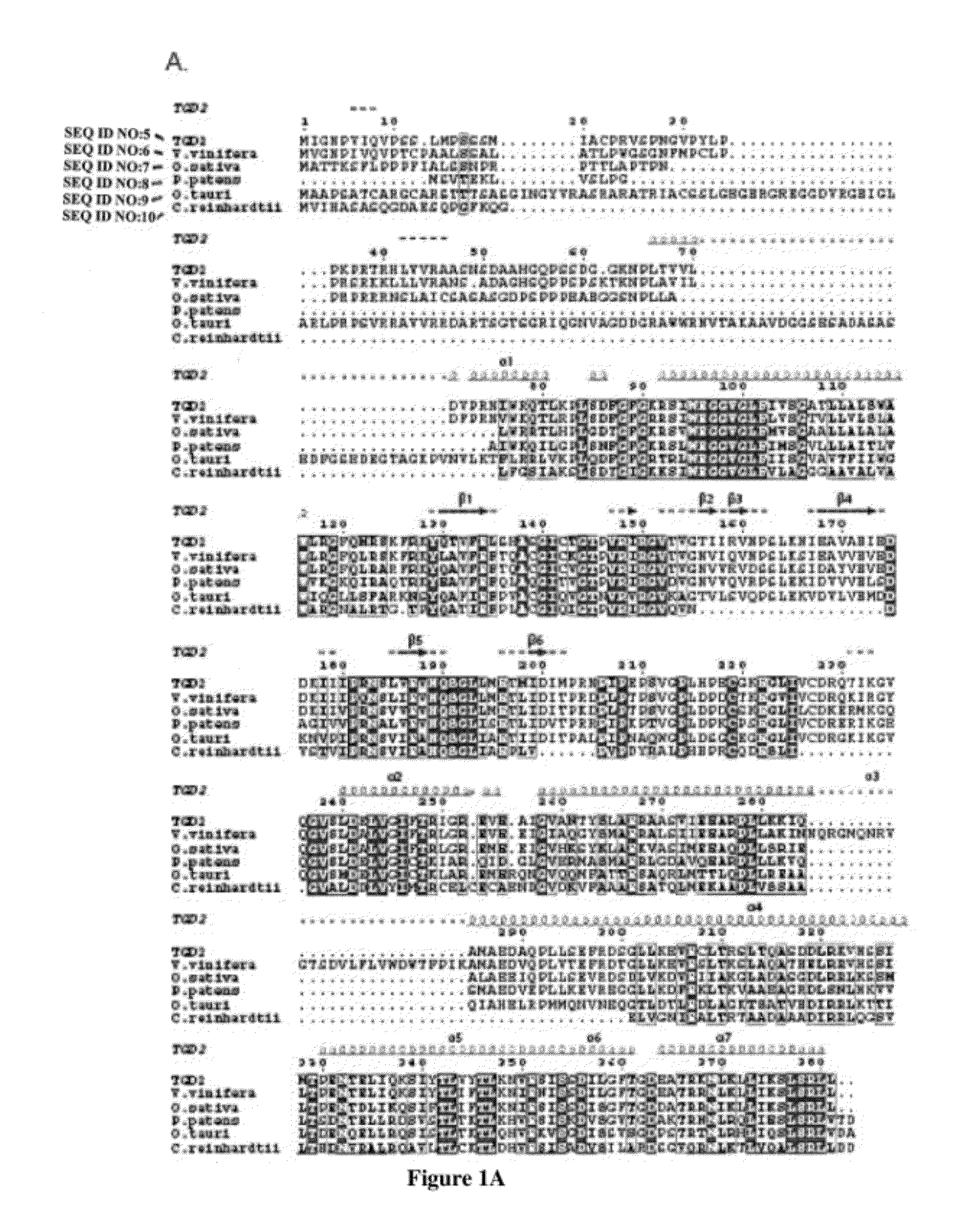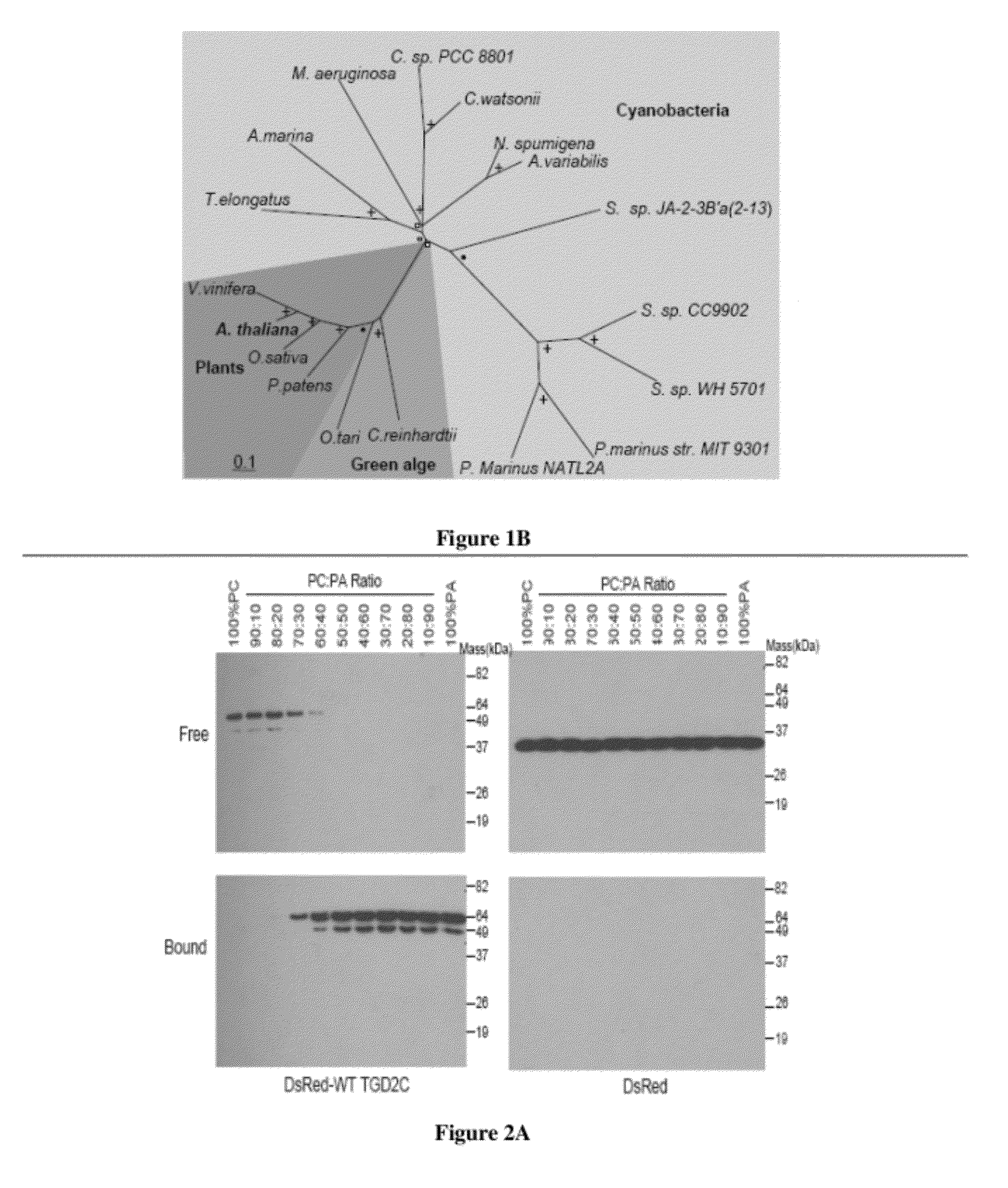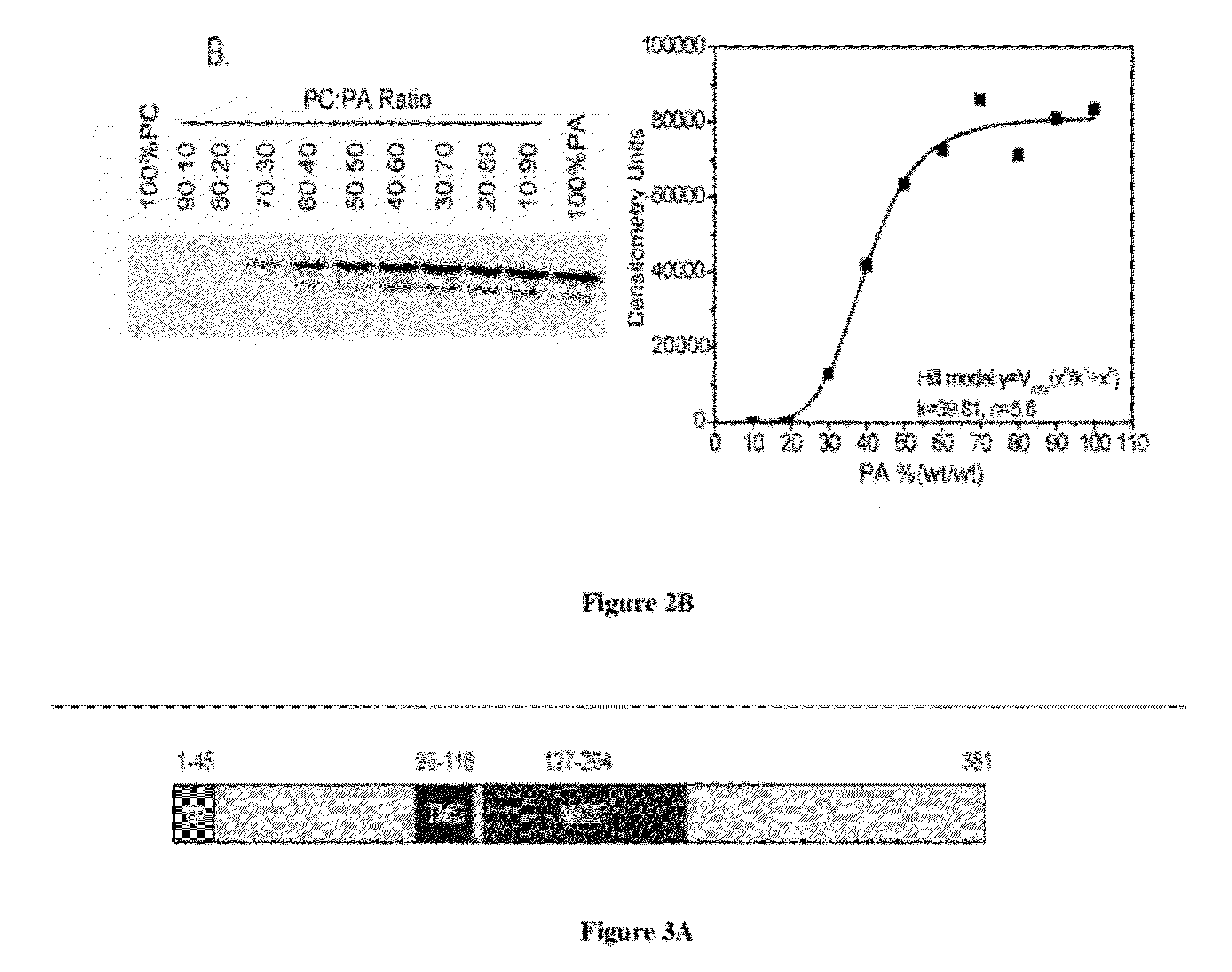Specific detection and quantification of phosphatidic acid using an arabidopsis trigalactosyldiacylglycerol-4 (TGD4) protein
a technology of phosphatidic acid and arabidopsis, which is applied in the field of specific detection and quantification of phosphatidic acid using an arabidopsis trigalactosyldiacylglycerol4 (tgd4) protein, can solve the problems of knowledge hampered the development of specific diagnostic and detection methods, and the specific binding sites of phosphatidic acid have not been identified, purified and/or isolated
- Summary
- Abstract
- Description
- Claims
- Application Information
AI Technical Summary
Benefits of technology
Problems solved by technology
Method used
Image
Examples
example i
Expression and Purification of DsRed-TGD2 Fusion Proteins
[0291]TGD2 truncated proteins used in this example were obtained from DNA generated by PCR using a TGD2-dTMD-pQE31 (also known as TGD2C-pQE31) plasmid template (22). Following digestion with NcoI and XhoI, the fragment was ligated into DsRed-plw01-His (a gift from Dr. Michael Garavito, Michigan State University, East Lansing, Mich.). Internal deletion mutants and / or point mutants were generated by site-directed mutagenesis approach on TGD2CDsRed-plw01 via PCR, with the primers and mutation sites listed in Table 1 (supra).
[0292]Fusion proteins were expressed in the Escherichia coli strain, BL21 (DE3) (Novagen, Madison, Wis.). An overnight pre-culture of LB medium (5 mL) was used to start a 200 mL culture in LB medium. The protein was induced with 50 μM IPTG (isopropyl-β-D-thiogalactopyranoside) at OD600 0.6-0.8, 16° C. and growth was continued overnight. Cultures were cooled to 4° C., washed twice and resuspended in lysis buffe...
example ii
[0296]Membrane lipid strips were purchased from Echelon Biosciences (Salt Lake City, Utah). The strips were first blocked with 3% bovine serum albumin in TBST (10 mM Tris-HCl, pH 8.0, 150 mM NaCl, and 0.25% Tween-20) for two hours and incubated in 0.5 μg / mL DsRed-TGD2 fusion protein solution in the blocking buffer at 4° C. overnight. The strips were washed 10 min for 3 times with TBST the next day and soaked in 3% bovine serum albumin in TBST with a Penta-His mouse monoclonal antibody (Sigma-Aldrich, St. Louis, Mo.) at 1:2,000 dilution at 4° C. overnight. The strips were washed twice with TBST and soaked in 3% bovine serum albumin in TBST with horseradish peroxidase-conjugated anti mouse antibody (Bio-Rad, Hercules, Calif.) at 1:20,000 dilution for an hour at room temperature. Following washing with TBST for 1 hour, the protein was detected by using the chemiluminescent detection system (Sigma-Aldrich).
example iii
[0297]The liposome association assay was performed as previously reported. (31). Briefly, lipids (dioleoyl-phosphatidylcholine, DOPC or dioleoyl-PA, DOPA) were incubated in TBS (50 mM Tris-HCl, pH 7; 0.1 M NaCl) at 37° C. for an hour followed by vigorous vortexing for 5 min. The liposomes were precipitated at 20,000 g and washed twice with ice-cold TBS.
[0298]Liposomes (200 μg) were mixed with purified DsRed-TGD2 fusion protein and TBS to make a final 100 μL solution. The mixture was incubated at 30° C. for 30 min and washed twice with ice-cold TBS by centrifugation at 20,000 g at 4° C. The liposome pellet mixed with sample buffer was analyzed by SDS-PAGE (28). Immuno-detection of the His-tagged protein was accomplished using the above mentioned Penta-His antibody at 1:15,000 and the anti mouse antibody at 1:75,000 dilution.
[0299]The protein band was visualized by chemiluminescent detection kit from Sigma. The autoradiography film was scanned, distinct prote...
PUM
| Property | Measurement | Unit |
|---|---|---|
| Solubility (mass) | aaaaa | aaaaa |
| Acidity | aaaaa | aaaaa |
| Optical density | aaaaa | aaaaa |
Abstract
Description
Claims
Application Information
 Login to View More
Login to View More - R&D
- Intellectual Property
- Life Sciences
- Materials
- Tech Scout
- Unparalleled Data Quality
- Higher Quality Content
- 60% Fewer Hallucinations
Browse by: Latest US Patents, China's latest patents, Technical Efficacy Thesaurus, Application Domain, Technology Topic, Popular Technical Reports.
© 2025 PatSnap. All rights reserved.Legal|Privacy policy|Modern Slavery Act Transparency Statement|Sitemap|About US| Contact US: help@patsnap.com



